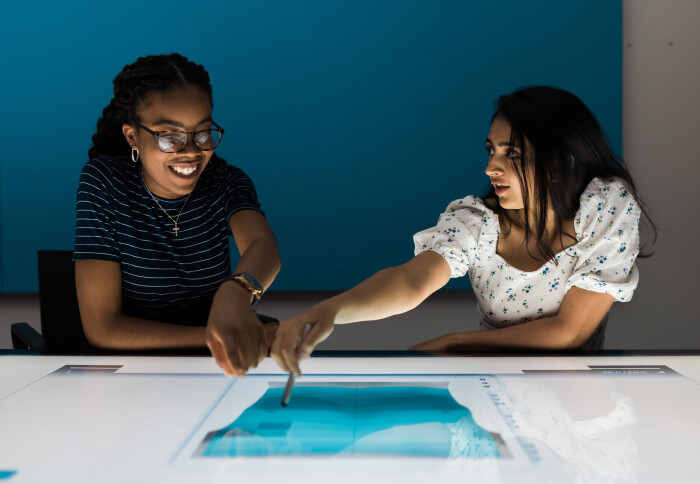
Dotplot founders Debra Babalola and Shefali Bohra

Some of Imperial’s most exciting startups will showcase their innovative solutions at an event in San Franscisco this month.
The five startups travelling represent a new wave of assistive devices and technologies that will allow people to take ownership of their health and wellbeing in ways that haven’t been possible before – often in proactive and personalised ways. In some cases, these solutions are also helping to empower marginalised and neglected communities.
“The environment at Imperial gives you the confidence and skills to bring an idea to life and to aim high" Debra Babalola Co-founder (Dotplot)
All these startups have emerged from Imperial’s thriving innovation ecosystem. This encompasses a range of supportive programmes and facilities – including the Enterprise Lab for early-stage student ideas, Advanced Hackspace for rapid prototyping, White City Incubator for deep science companies needing lab facilities and Scale Space for growing businesses. The overarching aim is to nurture innovative solutions that can change the world for the better, one tech at a time.
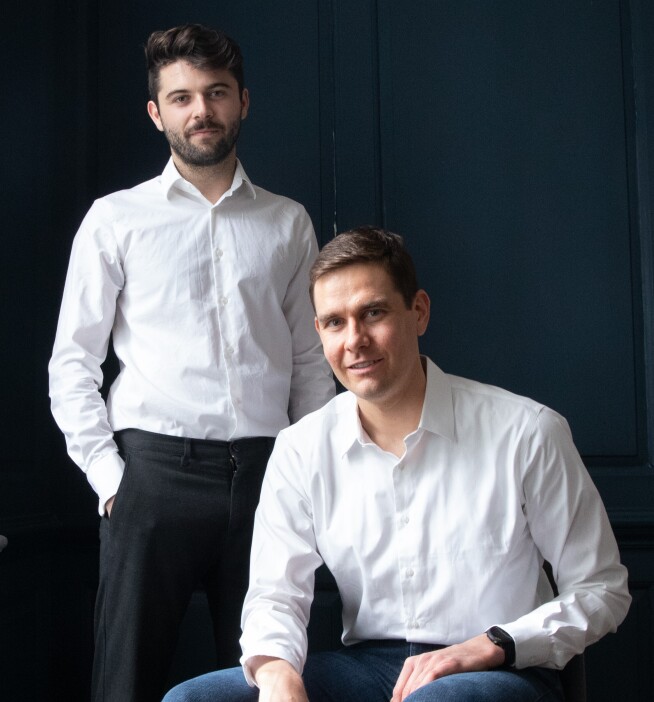
The startups will travel as part of a wider Imperial delegation to San Fransisco and the Bay Area – home to some of the world’s most recognised and established tech companies. Their solutions and products will be showcased at a special event at San Francisco’s iconic Shack15 venue – with an audience of investors, journalists and industry leaders. The startups will also attend the prestigious GBx Gala Dinner, the premier annual event for British founders and entrepreneurs in the Bay area.
vera AI
In recent years, it’s been increasingly acknowledged that women’s health has been neglected for decades by the wider medical establishment – for example, with gender bias in research, and with conditions such as endometriosis and polycystic ovary syndrome (PCOS) historically overlooked or misdiagnosed.
 vera AI, co-founded by Diana Canghizer and Federico Vaghi, is a platform seeking to transform hormonal and gynaecological health management using AI to create hyper-personalised guidance. Diana is graduate of the Innovation Design Engineering (IDE) master’s programme, jointly run by Imperial College London and the Royal College of Art, while Federico is an Imperial graduate of the Human and Biological Robotics master's course.
vera AI, co-founded by Diana Canghizer and Federico Vaghi, is a platform seeking to transform hormonal and gynaecological health management using AI to create hyper-personalised guidance. Diana is graduate of the Innovation Design Engineering (IDE) master’s programme, jointly run by Imperial College London and the Royal College of Art, while Federico is an Imperial graduate of the Human and Biological Robotics master's course.
The idea of vera AI originated from Diana’s personal experience of several years of misdiagnosis. “I didn't know what was wrong with my body. I didn't understand why I had the symptoms I had. Social media was confusing; friends and family didn't know either.”
It wasn’t until three years after first speaking to a doctor that Diana was diagnosed with polycystic ovary syndrome (PCOS) – a common hormonal condition that affects the ovaries, known to be widely misdiagnosed. “It turns out that it was affecting other aspects of my health and personal life and I just wondered, am I the only one going through this?”
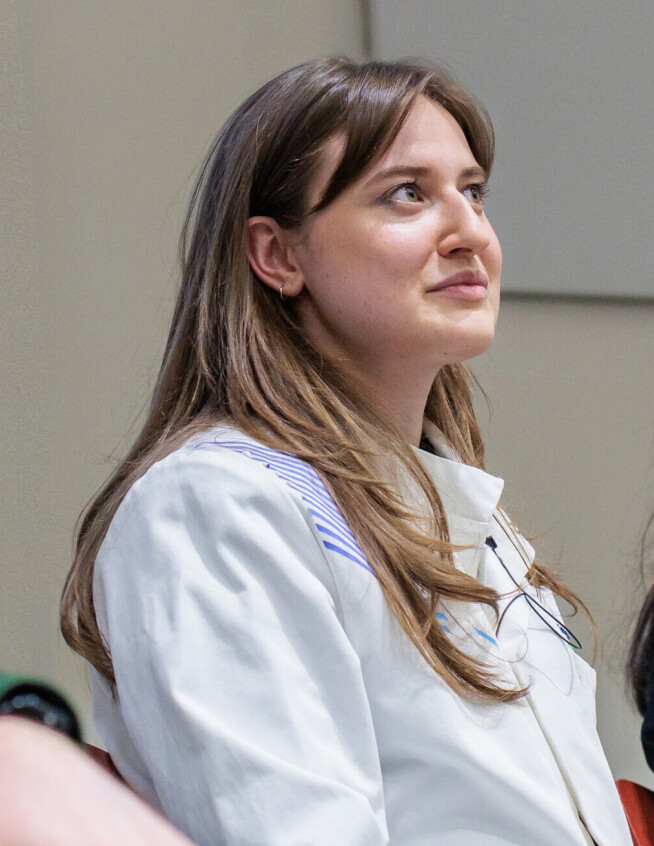
She was not. After speaking with more than 50 women and people who menstruate, she found out that there were a lot of similar experiences around hormonal health misinformation, miscommunication and misdiagnosis.
“Some of the stories were shocking and I just thought, we need to do something about it.”
Federico says one of the biggest problems they identified is the communication gap between doctors and patients. “During our interviews our users have expressed the difficulty in communicating with medical practitioners. Likewise, GPs have told us that patients sometimes struggle to accurately convey their symptoms or that the consultations are too short. Therefore, we are developing a generative AI personalised assistant on the platform to bridge that gap and help optimise the 10-minute consultations currently given in GP practices in the UK, by guiding patients how to monitor their symptoms and how to prepare for consultations.”
But vera AI’s ambitions extend beyond women’s health, it’s about personalised healthcare too.
“Every woman’s body, hormonal profile, response to medicines is different and the only information you can find online is very generalised,” says Diana. “The Royal College of GPs has said loud and clear that we need personalised patient dashboards by 2030. The future of healthcare is personalised and our platform is part of that movement.”
Diana won the Young Innovators Award 2023 from Innovate UK, and this grant helped her to fund some of the research and development for vera AI.
Dotplot
Dotplot is a healthtech company that aims to facilitate early detection of breast cancer. It was co-founded in 2022 by Debra Babalola and Shefali Bohra, whilst they were studying for the IDE programme.
“Dotplot is a tool that equips women to conduct accurate self-checks each month. There is currently no other tool on the market that can assist you to do a breast self-check – just pamphlets and information online that isn’t personalised, meaning there’s a lot of guesswork involved.” says Shefali.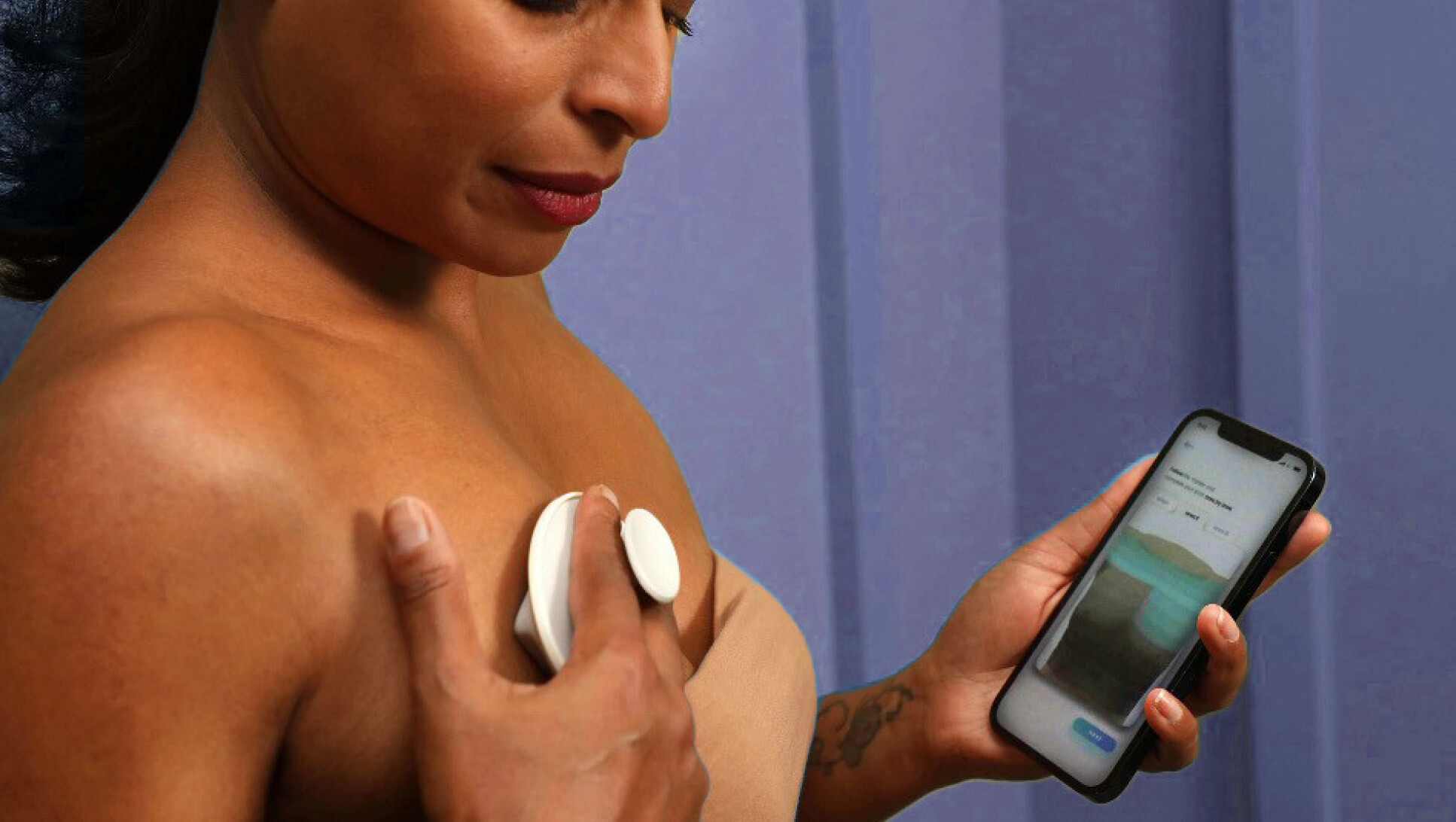 Breast cancer is the second most prevalent cancer in the world with 2.3 million cases registered in 2020, causing 685,000 deaths globally. With early detection, survival rates increase up to 93%.
Breast cancer is the second most prevalent cancer in the world with 2.3 million cases registered in 2020, causing 685,000 deaths globally. With early detection, survival rates increase up to 93%.
Dotplot offers a handheld device that pairs with a mobile app to help women perform breast checks every month. The tool creates a 3D model of the user’s chest and uses menstrual cycle data to predict and remind users to do their self-checks. It will alert the users when a reading differs from the baseline created with the first scan.
The team have held multiple co-creation workshops with breast cancer survivors to understand the need.
“The stories I hear drive me to keep going with Dotplot, especially when you talk to women who are at increased risk of breast cancer. A tool like ours can really help catch changes early and address the anxiety associated with being more susceptible.” says Shefali.
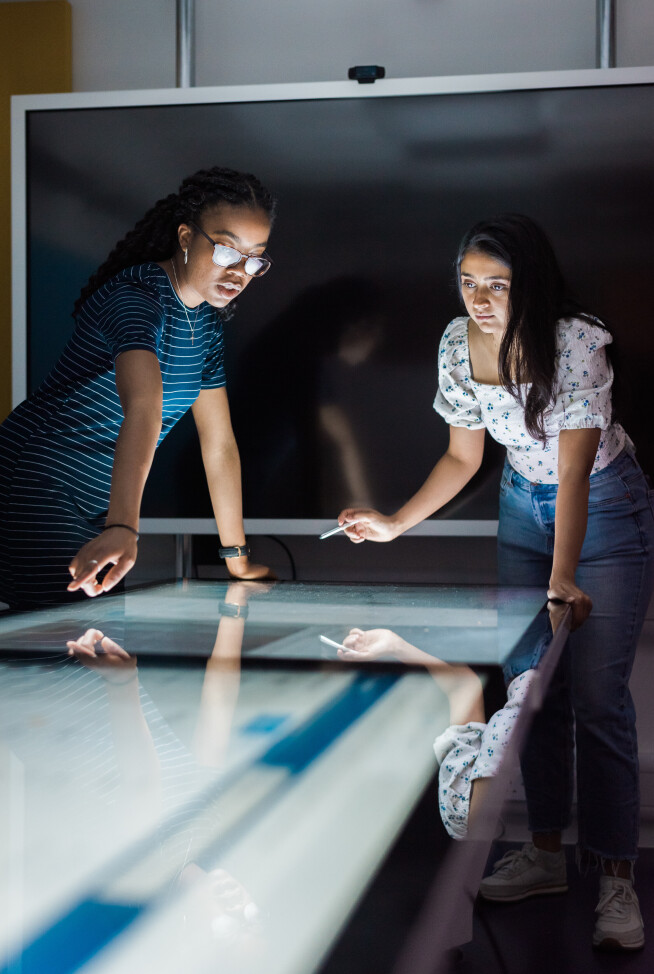
Sharing her founder journey, Debra said, “I had the confidence to pursue Dotplot because I saw so many other people coming out of Imperial creating start-ups with huge impact.”
Dotplot won the Venture Catalyst Challenge, Imperial’s flagship entrepreneurial programme.
“The whole support network at Imperial is brilliant. From the Enterprise lab, to the training to the mentoring schemes.” said Debra. “The environment at Imperial gives you the confidence and skills to bring an idea to life and to aim high. One day we hope to expand Dotplot’s technology to other diseases beyond just breast cancer.”
MakeSense Technology
When it comes to empowering people with tech, it’s difficult to find a more tangible example than MakeSense Technology, a start-up company formed at Imperial co-founded by CEO Dr Rob Quinn (Visiting Researcher at Imperial and Imperial PhD graduate).
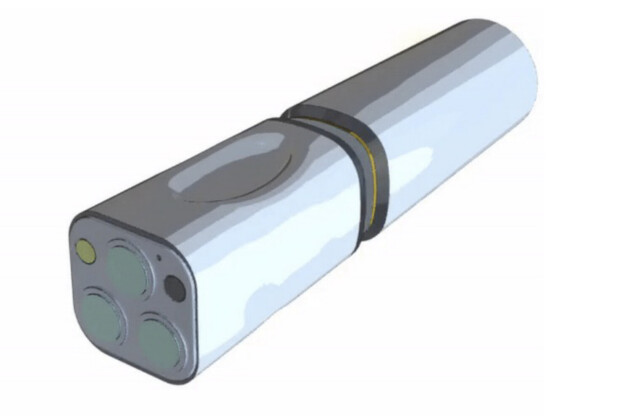 The team is developing a cost-effective, hand-held ‘sensory substitution device’ to help people with vision impairment navigate completely independently. Users hold the device in front of them like a torch, while advanced AI-based computer vision and localisation technology provides haptic cues to direct them.
The team is developing a cost-effective, hand-held ‘sensory substitution device’ to help people with vision impairment navigate completely independently. Users hold the device in front of them like a torch, while advanced AI-based computer vision and localisation technology provides haptic cues to direct them.
Rob explains: “We’re using a type of AI called computer vision, where you can take pixels from a camera, put them through an algorithm, and derive meaning from those pixels to identify objects and make inferences about environments – for example, distinguishing between a pavement and a road. It’s what driverless cars use at the cutting edge. We're also using other types of AI for high fidelity localisation.”

MakeSense aims to provide a cost-effective alternative to guide dogs, which cost £55,000 to train and are only offered to 1% of people with vision impairment. As part of development and testing, the company has worked closely with charities such Blind Veterans UK and is aiming to raise around £2.5 million to get their device to market.
“It’s impossible for a person that has sight to understand or truly put yourself in the shoes of someone who has vision impairment. You can close your eyes and even try and walk around, but it’s just not the same as experiencing permanent sight loss. So, in everything we do, we must engage with those who are affected by vision impairment. Some of these people have been quite emotional after using the device.”
Osstec
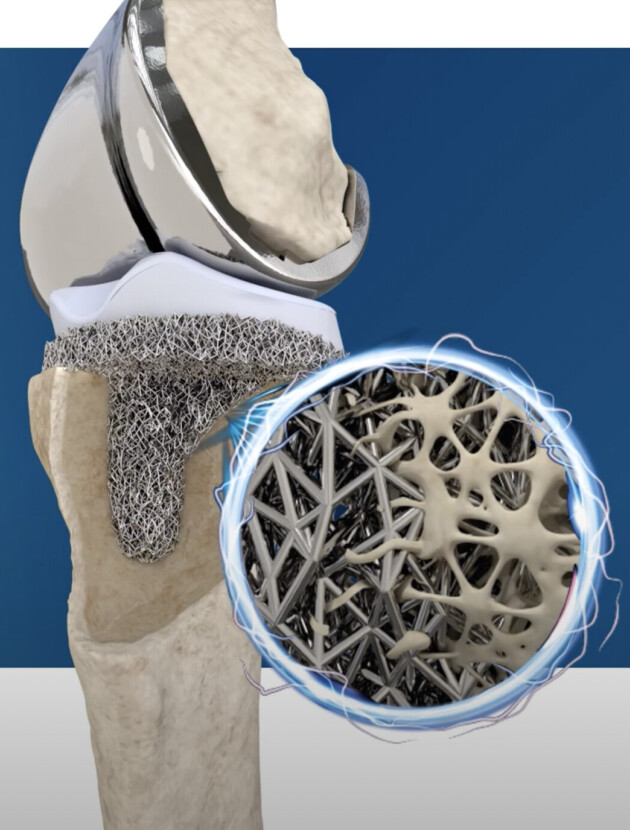 Another innovative start-up aiming to get people moving around again is Osstec – led by CEO and founder Dr Max Munford (Imperial Research Associate and Imperial MEng and PhD graduate). Osstec is developing 3D-printed, orthopaedic implants that mimic the properties of real bone and even stimulate the growth of healthy tissue in people with osteoarthritis. There are around 1.3 million knee replacements performed every year around the world (including around 100,000 in the UK) which could benefit from the use of this technology.
Another innovative start-up aiming to get people moving around again is Osstec – led by CEO and founder Dr Max Munford (Imperial Research Associate and Imperial MEng and PhD graduate). Osstec is developing 3D-printed, orthopaedic implants that mimic the properties of real bone and even stimulate the growth of healthy tissue in people with osteoarthritis. There are around 1.3 million knee replacements performed every year around the world (including around 100,000 in the UK) which could benefit from the use of this technology.
“Existing total knee implants work well at reducing pain, but they simply don't restore natural function and gait – research shows that people don’t walk normally after a total knee replacement. They also need replacing approximately every 15 years, so if you’re 55, you’ll probably need new implants at 70, then again at 85 – and every time you remove more bone, and the patient becomes more inactive.
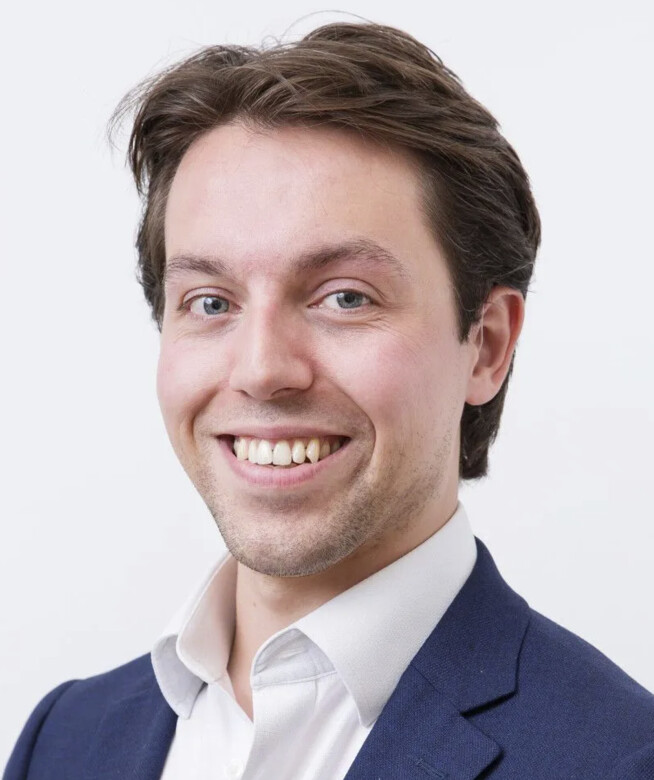
“People want and need more from their implants: they want to be able to kneel on the floor and play with their grandchildren, go jogging or even higher impact sports like skiing. We've already shown that we can do a lot better with the implants we’re developing. Our vision is to empower people to stay healthy and active, and that's what our new technology offers orthopaedic patients.”
Osstec recently conducted pre-clinical trials of their device, with highly promising results, and closed a £1.2 million funding round in early 2023.
Phare Labs
Phare Labs is an Imperial start-up aiming to make families safer and healthier in their own homes. Co-founded by Imperial alumnus Arnau Donate (MSc Global Innovation Design) and Daniel McBride (London Business School), the company has developed an AI-powered smoke alarm and indoor air quality monitoring device.
Smoke alarm technology has changed little in the past 50 years, Arnau says. And more importantly, their research has shown that existing smoke alarms only detect around 40% of genuine fires and are extremely prone to false alarms (around 89% of alarm activations are spurious).
Phare Labs uses a suite of five sensors coupled with machine learning algorithms to more accurately and rapidly determine if smoke is from a real fire or non-emergency source like cooking smoke, dust, or pollen.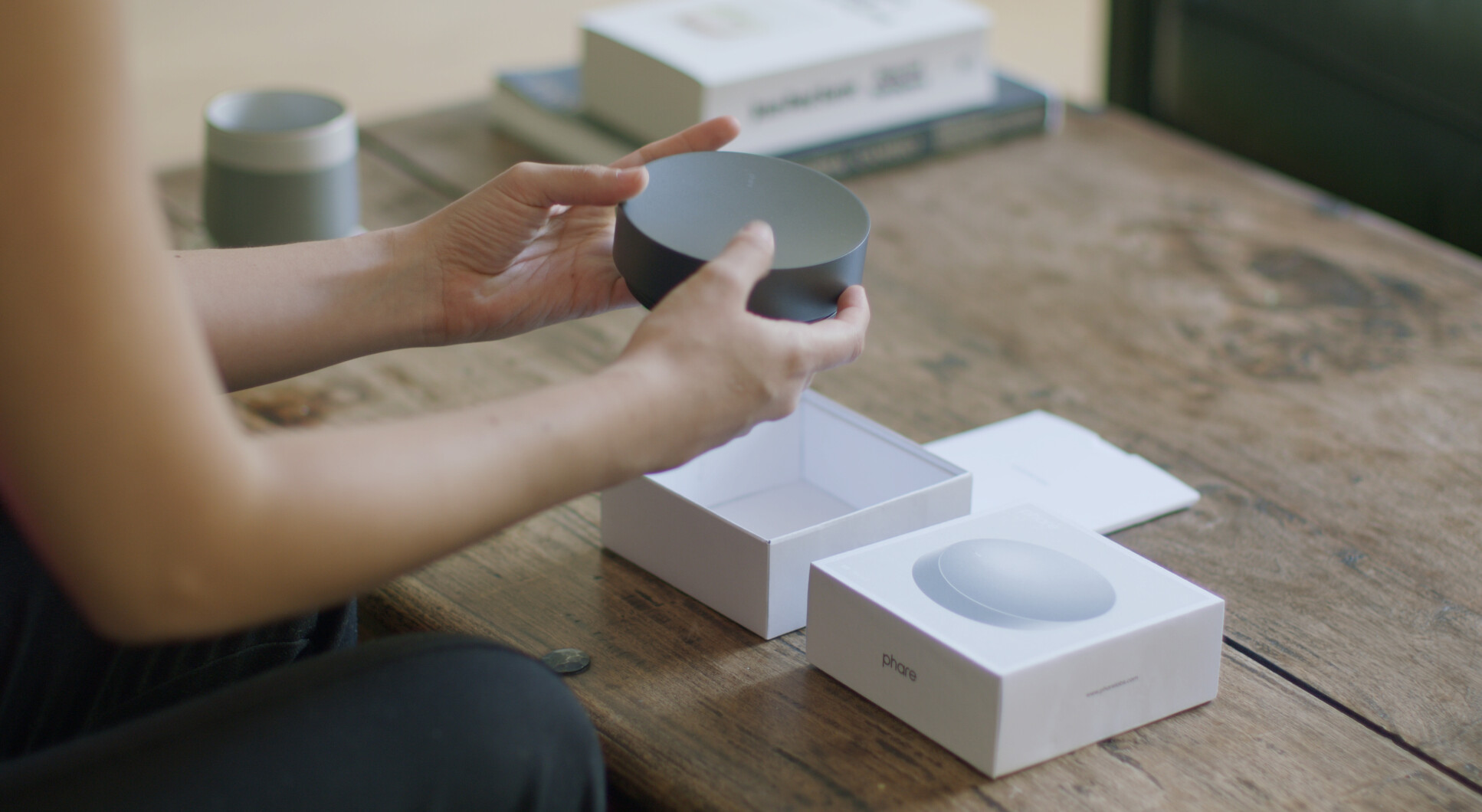 “Our device gathers over 20 data points every second and we use AI to identify patterns, build up a real-time picture of the air composition, and how it changes to understand what's happening in the room. We’ve shown in the lab that we can detect fires up to a minute earlier than existing smoke detectors and so in theory prevent fires from escalating at the most critical moment.”
“Our device gathers over 20 data points every second and we use AI to identify patterns, build up a real-time picture of the air composition, and how it changes to understand what's happening in the room. We’ve shown in the lab that we can detect fires up to a minute earlier than existing smoke detectors and so in theory prevent fires from escalating at the most critical moment.”
The device is also able to look at trends in indoor air quality over time, including the potentially harmful build-up of pollutants such as carbon monoxide, nitrous oxide and particulate matter, and prompts its users to take action, such as opening a window to ventilate their home.
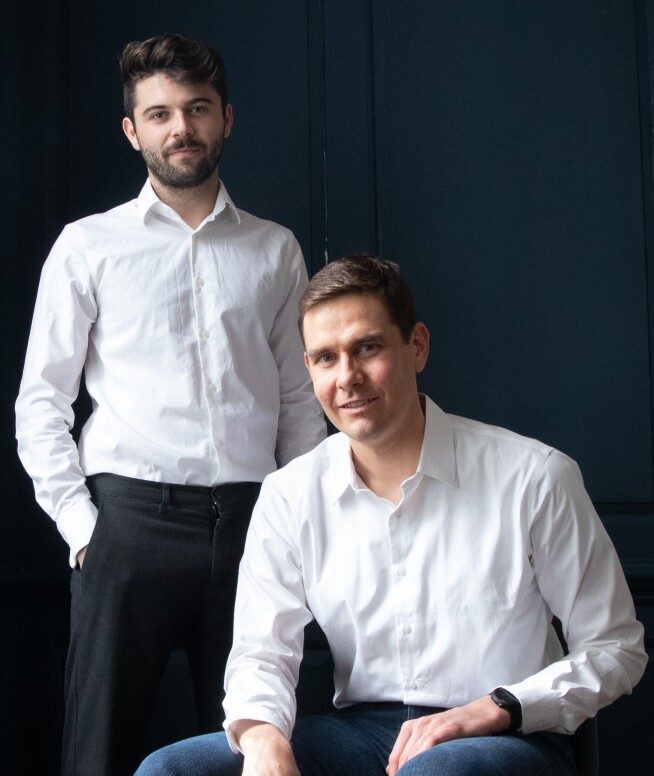
“We tend to think of air pollution arising mainly from cars and factories, but indoor air quality can be up to five times worse than outside. That’s partly because houses are increasingly well insulated, which is great for energy efficiency, but that means there is not air flowing through the house, and you get numerous sources of potential pollutants such as emissions from gas cooking stoves and wood burners.”
The company has rigorously tested and developed its device in the lab and in 30 homes and is due to launch a commercial device direct to consumers in 2024.
“Our goal is to make 500 million homes safer and healthier places to live. We’re taking things one step at a time,” says Arnau.
Article text (excluding photos or graphics) © Imperial College London.
Photos and graphics subject to third party copyright used with permission or © Imperial College London.
Reporters
Andrew Czyzewski
Communications Division

Contact details
Email: press.office@imperial.ac.uk
Show all stories by this author
Ellie Cawthera
Communications Division

Contact details
Email: e.cawthera@imperial.ac.uk
Show all stories by this author



